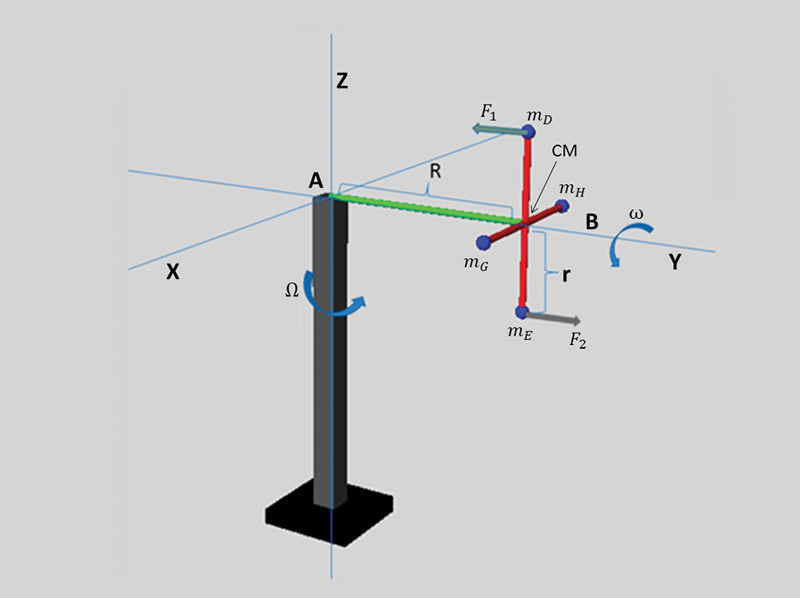Physics in a Whirl
Fall
2014
Stars - SPS Awards and Accolades
Physics in a Whirl
Undergraduate research puts a new spin on gyroscopes
By:Harvey Kaplan
Graduate Student, University of Maryland, College Park
University of Maryland-College Park
 Last summer Harvey Kaplan, an SPS member and then-senior at Purdue University in West Lafayette, Indiana, presented a poster on his work modeling a gyroscope at the American Association of Physics Teachers (AAPT) Summer Meeting. He won an SPS Poster Award at the meeting, and went on to publish his work in The Physics Teacher. We sat down with Kaplan to learn more about his head-spinning work on the motion of gyroscopes.
Last summer Harvey Kaplan, an SPS member and then-senior at Purdue University in West Lafayette, Indiana, presented a poster on his work modeling a gyroscope at the American Association of Physics Teachers (AAPT) Summer Meeting. He won an SPS Poster Award at the meeting, and went on to publish his work in The Physics Teacher. We sat down with Kaplan to learn more about his head-spinning work on the motion of gyroscopes.
A physics professor of mine once explained that physics is the only field that tries to put itself out of business. It was an amusing way to say that every complicated physics concept can be thought of as merely a conglomerate of fundamental physics concepts.
I like this idea in physics and recently applied it to making a computer simulation of a gyroscope. My hope was to explain the behavior of a gyroscope using the basic concepts of linear momentum and force instead of the typical analytical tools of angular momentum and torque, which hide a lot of complexity under the rug. I ended up publishing the work earlier this year in the AAPT peer-reviewed journal The Physics Teacher—an appropriate venue for a project that was about looking at a physical system in an unconventional way and presenting the analysis of that system in detail.
The first step was to approximate the structure of the gyroscope. Instead of considering a continuous massive disk that spins about its axis, I started with a simpler radial arrangement of four point masses equidistant from and spinning about a center. This analysis could then be generalized to any number of masses. As the number of masses increased, the masses got closer together, and the approximation approached a continuous gyroscope.
Each mass experienced motion due to precession of the center of mass of the gyroscope and motion due to the rotation of the plane that the point masses defined. I examined how the precessional motion affected the rotational motion of the point masses and how the rotational motion affected the precessional motion of the point masses. These interactions caused “motional” forces which opposed the force on the gyroscope due to gravity and kept the gyroscope upright; more specifically, the torque due to the motional forces countered the torque due to gravity.
My first program simulating these forces allowed the user to vary many parameters, including the gyroscope’s physical dimensions, starting position, initial orientation, and rotation rate. But this simplified gyroscope system was not perfect. It did not model higher-order effects in space and time; when the simulation ran long enough, one could see small effects that were not physical, like hints of energy not being conserved. I made another simulation that stepped through single iterations of the program with force and momentum vectors displayed to allow the user to visualize how the system works.

This project pushed me to think about old concepts in a new way and provided for many engaging conversations. I hope the programs I created can continue to inspire conversations as teaching tools for students exploring this type of physics.
I feel very fortunate to have attended and presented my research at a national meeting of AAPT as an undergraduate. I learned a lot from listening to the professors in attendance discuss physics and physics teaching. The recognition from SPS for the work I presented there and then being published in The Physics Teacher were important milestones for me; they indicated that I was capable of doing interesting and relevant work in physics. //
Spin Doctor
Read the full research paper by Kaplan and his co-author at https://aapt.scitation.org/doi/10.1119/1.4849150.
